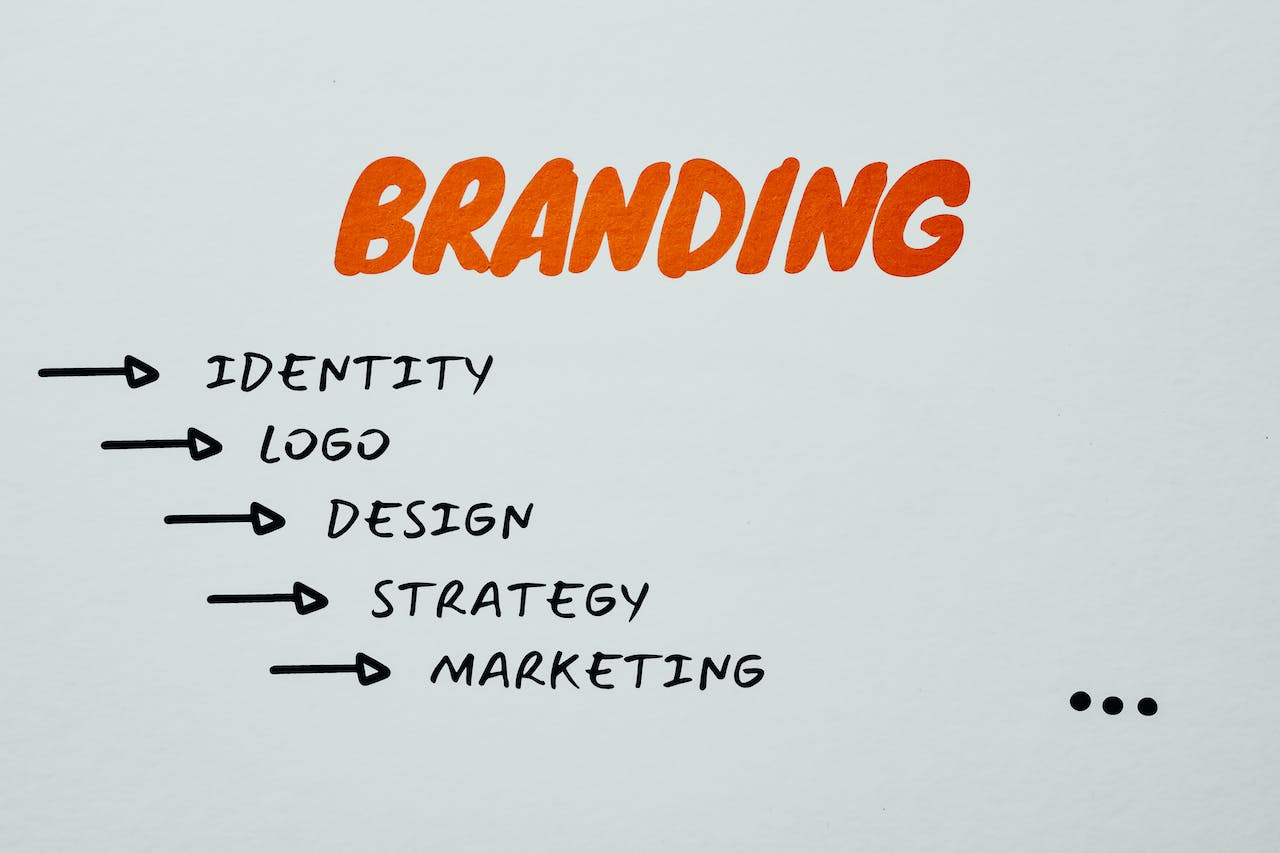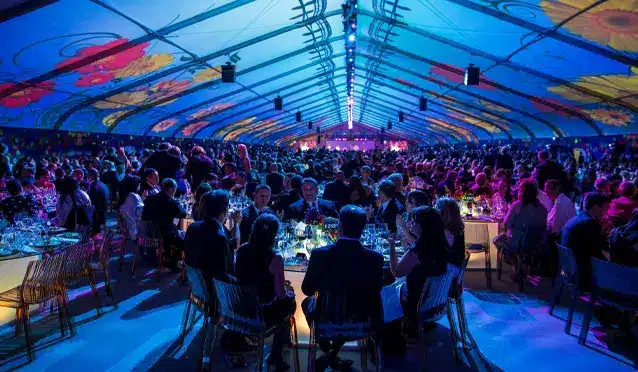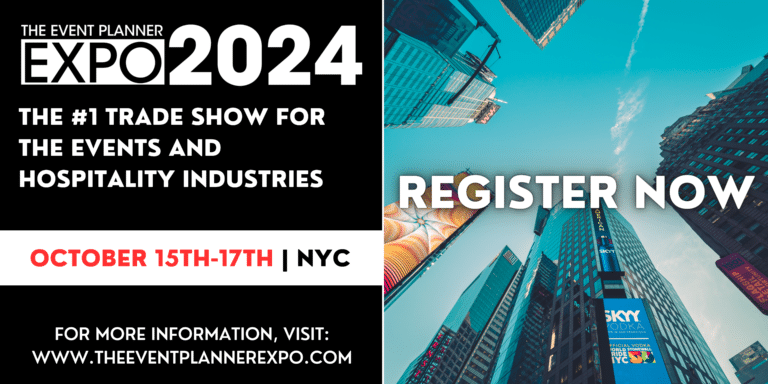The corporate brand identity is the set of values, attributes, and associations that define the essence and personality of a company. Moreover, it distinguishes a company from its competitors and creates a lasting impression on customers, partners, and stakeholders. A strong corporate brand identity can increase customer loyalty, enhance reputation, and improve performance.
Event design can significantly impact the corporate brand identity by creating a memorable and meaningful event experience that aligns with the company’s vision, mission, and values. The article will explore the benefits and challenges of event design for corporate brand identity and provide some examples and best practices for successful corporate event design.
Event Design and Brand Identity: What You Need to Know
Event design is the process of creating a coherent and engaging experience for the attendees of an event. It involves planning the event’s physical, sensory, and emotional aspects, such as the venue, theme, activities, food, music, and mood. Additionally, event planning and design is important for the satisfaction and enjoyment of the attendees. The activity also bolsters the communication and reinforcement of the corporate brand identity.
Establishing a memorable and authentic brand identity is crucial in the fast-paced and competitive business landscape. Beyond the digital realm, where logos and taglines reign supreme, lies an often-overlooked powerhouse for brand expression—the corporate event.
Event gatherings are not mere occasions for networking. They have become opportunities for companies to showcase their values, personality, and vision in a tangible and immersive way. Corporate event design has become a strategic tool that transcends aesthetics, weaving brand narratives into the very fabric of an event.
The Visual Symphony: Event Design and Brand Identity
Imagine entering a corporate event where every detail, from the table linens to the lighting, reflects the brand’s color palette. Color psychology also plays a pivotal role in shaping perceptions and emotions. It’s about orchestrating them harmoniously to evoke the intended mood.
A well-thought-out color scheme creates a visual symphony that resonates with attendees, imprinting the brand’s essence in their minds.
Consider a financial institution opting for a calming blues and greens palette to convey stability and trust. On the other hand, a tech startup might embrace vibrant, energetic hues to exude innovation and dynamism.
EMRG Media, a trailblazer in the event planning sphere, understands this nuanced dance of colors. Their expertise lies in selecting colors and leveraging them to narrate a brand’s story seamlessly.
Leveraging the Benefits of Event Design on Brand Identity
Corporate events stand as powerful platforms for shaping and reinforcing brand identity. Beyond the logistics and coordination, event planning is an art form that, when executed with precision, can become a catalyst for brand growth and recognition.
Event gatherings go beyond mere gatherings, becoming strategic tools that leave a lasting mark on the essence of a company.
1. Fostering Authentic Connections: The Human Touch
NYC events offer a unique opportunity for companies to step out from behind the digital curtain and connect with their audience personally. Whether it’s a product launch, a conference, or a team-building retreat, the human touch infused into events fosters authentic connections. Attendees witness and experience the brand firsthand, which forges emotional bonds that transcend the transactional.
The art of event planning lies in creating an atmosphere where the brand’s personality shines through. Every detail contributes to the overall impression, from the venue choice to the event’s interaction points. This authenticity resonates with attendees, establishing a genuine connection beyond what traditional marketing channels can achieve.
2. Visual Symphony: Aesthetics Reflecting Identity
The visual elements of an event are the brushstrokes that paint the brand’s identity onto the canvas of the occasion. Like artists, event planners strategically use color schemes, decor, and layout to mirror the brand’s aesthetics. Whether it’s a tech giant’s sleek minimalism or the creative agency’s vibrant hues, the visual symphony at an event becomes a living representation of the brand’s identity.
Beyond the logo and tagline, events immerse attendees in an environment visually communicating the brand’s values and essence. Each element—down to the choice of fonts and graphics—contributes to a cohesive visual narrative. The result is a memorable and immersive experience that etches the brand’s visual identity into attendees’ minds.
3. Live Brand Experience: Making Memories Stick
In the cluttered landscape of advertisements and digital content, creating a memorable brand experience is no small feat. Here, events emerge as powerful tools for leaving a lasting imprint on attendees. From engaging activities to interactive displays, every moment at an event is an opportunity to shape how attendees perceive the brand.
The benefit of event planning in this context lies in its ability to create tangible memories. Attendees don’t remember what they see or hear, but they remember what they feel and experience. A well-crafted event becomes a story, with the brand as the central character. These memories act as touchpoints, influencing future decisions and fostering brand loyalty.
4. Aligning with Brand Values: A Strategic Dance
For brands with strong values, events provide a stage to showcase and align with these principles. Events allow brands to tangibly demonstrate these values, whether a commitment to sustainability, innovation, or community engagement. From eco-friendly event practices to impactful CSR initiatives, aligning with brand values adds depth to the brand’s identity.
Event planning becomes a strategic dance where each element is choreographed to reflect the brand’s ethos. The activity becomes an opportunity for the brand to walk the talk. When attendees witness the brand’s values in action, it builds credibility and trust, further solidifying the brand’s identity in the audience’s minds.
5. Networking and Business Growth
Events are not isolated occurrences but seeds that can blossom into long-term business relationships. The networking opportunities embedded in events create avenues for business growth that extend far beyond the event horizon. Whether forging partnerships, securing clients, or attracting top talent, events act as catalysts for expanding the brand’s reach and influence.
Event planning here is a strategic investment in the brand’s future. The relationships nurtured during events contribute to brand advocacy, with satisfied attendees becoming brand ambassadors in their respective networks. The ripple effect of positive experiences at events extends the brand’s identity into new circles, fostering organic growth.
6. Measurable Impact: Analytics in the Aftermath
In the era of data-driven decision-making, event planning doesn’t escape the scrutiny of analytics. The benefit here lies in measuring the impact of events on corporate brand identity. From attendee engagement metrics to social media reach, event planners have a toolkit of analytical insights to gauge the success of their endeavors.
These analytics go beyond the immediate aftermath of an event. By tracking long-term trends and attendee behavior, brands can refine their strategies for future events, continuously evolving and fine-tuning their brand identity. The data-driven approach to event planning transforms these gatherings from ephemeral moments into strategic components of the brand’s growth trajectory.
7. Events as Brand Architects
Events emerge as skilled architects in the tapestry of corporate branding, shaping a brand’s identity with precision and intent. The benefits of event planning extend beyond the logistical orchestration; they encompass the creation of immersive experiences, authentic connections, and tangible memories that linger in the hearts and minds of attendees.
Event planning is not a mere checkbox on the marketing to-do list; it’s a strategic endeavor that requires creativity, foresight, and an understanding of the brand’s essence.
As brands navigate the dynamic business landscape, events are formidable tools for showcasing and actively shaping corporate brand identity. Each event becomes a chapter in the brand’s story, contributing to a narrative that resonates, captivates, and endures.
EMRG Media: Masters of Brand-Centric Event Design
1. Understanding Brand DNA
At the core of EMRG Media’s success in crafting brand-centric events is its profound understanding of each client’s brand DNA. Before diving into the world of colors, themes, and layouts, they embark on a journey to unravel the intricacies of the brand. This deep dive allows them to translate abstract brand values into tangible event elements, ensuring a seamless fusion of identity and experience.
2. Tailoring Every Element
EMRG Media’s approach is not one-size-fits-all; it’s bespoke event design at its finest. From the initial event concept to the final execution, every element is meticulously tailored to align with the brand’s identity. This level of customization ensures that each event becomes a unique expression of the brand, leaving an indelible mark on attendees.
3. Decor as Silent Spokesperson
The decor of a corporate event is akin to the attire a person chooses for a job interview—it speaks volumes without uttering a word. Whether it’s sleek and modern or classic and opulent, the decor acts as a silent spokesperson for the brand.
EMRG Media’s design prowess shines here, tailoring each event’s decor to encapsulate the brand’s identity. Incorporating elements that echo the company’s ethos transforms venues into immersive brand sanctuaries, leaving a lasting imprint on attendees.
4. Crafting Narratives Through Themes
Themes in corporate events are more than a superficial layer of glitz. They are narrative frameworks that convey a brand’s story.
EMRG Media understands that a theme should not be chosen arbitrarily – it should resonate with the brand’s values. For instance, a sustainability-focused company might opt for an eco-friendly theme, seamlessly integrating recycled materials and greenery into the event.
5. Creating Emotional Connections
Themes have the power to evoke emotions, and as any marketer attests, emotions are the conduits to forging lasting connections. Whether it’s nostalgia-inducing retro themes or futuristic, cutting-edge motifs, the chosen theme sets the emotional tone of the event.
EMRG Media excels in curating themes beyond aesthetics, creating an emotional landscape where attendees connect with the brand on a deeper level.
6. Layout Dynamics: Navigating Brand Journeys
The layout of a corporate event is the blueprint for brand experiences. How attendees move through the space, the flow of activities, and the strategic placement of brand touchpoints—all contribute to the overall narrative.
EMRG Media adopts a meticulous approach, tailoring layouts to guide attendees through a curated brand journey. Whether a product launch or an industry conference, the spatial design aligns with the brand’s message, ensuring a cohesive and memorable experience.
7. Zones of Influence
Breaking down the event space into zones allows for targeted brand communication. Each zone becomes a microcosm of the brand’s identity, offering varied experiences that cater to different aspects of the brand narrative.
From interactive product displays to cozy networking corners, EMRG Media’s expertise is crafting diverse zones that tell a cohesive brand story.
8. Soundscapes as Brand Soundtracks
Consider the power of a carefully curated playlist or a live musical performance that complements the brand’s vibe. EMRG Media’s events are a testament to the significance of soundscapes as brand soundtracks.
Whether a high-energy launch or an intimate networking dinner, the auditory experience is finely tuned to align with the brand’s identity, creating a cohesive and immersive environment.
9. Leaving a Lasting Impression
Design is about creating visually appealing space as a strategic tool for brand expression. A well-designed event goes beyond aesthetics; it becomes a living embodiment of a brand’s values, message, and identity.
EMRG Media’s expertise in this arena is a testament to the transformative power of thoughtful event design.
As brands recognize the potential of events as brand-building platforms, event design will only become more critical. It goes beyond hosting an event, curating an experience that lingers in attendees’ minds, and forging a connection beyond the event’s confines. In the hands of skilled event designers like EMRG Media, corporate events become canvases where brands paint narratives that captivate, resonate, and endure.
Beyond the Visual: Tips for a Successful Corporate Event Design
While sight dominates the event design conversation, EMRG Media recognizes the potential of engaging all the senses. The scent of a bespoke fragrance, the touch of textured materials, and the taste of carefully curated culinary delights—these sensory elements elevate the event from a visual spectacle to a holistic brand immersion.
By appealing to multiple senses, corporate brands can create a more profound and memorable impact. Here are some tips that transcend the visual realm, resonating with attendees on a deeper, multi-sensory level.
1. The Symphony of Sound: Setting the Tone
Sound is a powerful storyteller. Consider curating a soundtrack that aligns with your theme. From ambient background music that sets the tone to carefully selected tracks that punctuate key moments, the right soundscape enhances the overall experience.
Whether it’s a product launch or an industry conference, the auditory elements should complement the narrative, creating a harmonious blend that captivates attendees.
2. Creating a Fragrant Identity
Scents have an unmistakable and remarkable ability to evoke emotions and memories regarding a brand. Infuse your event with signature scents that become synonymous with your brand.
Consider strategically placing aromatherapy diffusers throughout the venue, releasing scents that enhance the thematic elements. Whether the crisp scent of pine for a winter wonderland theme or the citrusy notes of bergamot for a vibrant summer soirée, fragrances can transport attendees into the heart of your narrative.
Take sensory engagement a step further by introducing customized scent stations. These stations allow attendees to interact with various scents, creating a personalized olfactory experience. It adds an element of interactivity, ensuring that each attendee leaves with a sensory memory uniquely tied to your event. The scents become a part of your brand identity, lingering in attendees’ minds long after they’ve left the venue.
3. Texture and Touch: Tactile Elegance
The tactile dimension is often underestimated in event planning. Introduce textures that invite touch and interaction. From polished wood’s smoothness to velvet’s plushness, the materials you choose contribute to the overall sensory experience.
Consider incorporating tactile elements into seating, decor, or even interactive exhibits. These elements physically engage attendees, creating a richer connection with the event environment. Create touchpoints that encourage interaction. Whether it’s a textured wall that attendees can touch as they enter the venue or interactive displays with varying textures, these elements invite engagement.
The goal is to make attendees active participants in the sensory journey, fostering a sense of connection and immersion. Tactile experiences contribute to the overall narrative, making the event more memorable and engaging.
4. Visuals in Motion: Dynamic Experiences
While we focus on engaging all the senses, visuals still play a crucial role. Elevate visual experiences by incorporating dynamic displays that interact with the theme. From holographic projections to immersive VR experiences, technology can enhance the visual narrative, creating moments that leave attendees in awe.
The key is to seamlessly integrate these visual elements into the broader sensory landscape, ensuring they contribute to the multi-sensory journey rather than distract from it.
5. Dynamic Lighting Sequences
Lighting is a visual element that can also be harnessed to engage other senses. It enhances the visual appeal and contributes to the overall ambiance and mood.
Consider dynamic lighting sequences that synchronize with the event’s narrative. From subtle shifts in color temperature to dramatic light shows that punctuate key moments, lighting becomes a silent conductor in your sensory symphony.
6. Crafting Lasting Impressions
In the intricate world of corporate event planning, the mastery lies in engaging all the senses to craft narratives that resonate on a profound level.
Beyond the visual spectacle, incorporating sound, scent, touch, taste, and dynamic visuals creates an immersive experience that lingers in attendees’ minds.
As you embark on your journey of sensory event design, remember that each element contributes to the overall narrative, leaving a lasting impression beyond the event’s confines. It’s a multi-sensory journey that captivates, enchants, and creates enduring memories.
FAQs About Event Designs and Brand Impact
1. How does event design influence a brand’s identity?
Event design plays a pivotal role in shaping a brand’s identity by creating a visual and sensory experience that aligns with the brand’s values, messaging, and overall persona. The choice of colors, themes, decor, layout, and interactive elements collectively contribute to the narrative attendees associate with the brand. A well-crafted event design reinforces brand identity, leaving a lasting impression on participants.
2. What considerations should be made to ensure event design aligns with a brand’s message and values?
To ensure alignment with a brand’s message and values, event planners must thoroughly analyze the brand’s identity. The activity involves understanding brand colors, imagery, and overall aesthetic preferences. Collaboration between event organizers and brand representatives is essential to seamlessly incorporate these elements into the design.
Additionally, thematic choices, interactive elements, and overall ambiance should resonate with the brand’s ethos to create a cohesive and impactful experience.
3. How can event design be leveraged to enhance brand recognition and recall?
Event design is a powerful tool to enhance brand recognition and recall by creating a memorable and distinctive atmosphere. Consistent visual elements, like logos and color schemes, reinforce brand identity.
Incorporating unique and immersive design elements, like interactive displays or thematic experiences, ensures that attendees associate the event—and, by extension, the brand—with a memorable and positive experience. The strategic use of design can leave a lasting imprint on participants’ minds, contributing to long-term brand recall.
Final Remarks About Event Design and Brand Identity
Event design is a powerful tool for creating and strengthening the corporate brand identity. It can help a company to showcase its uniqueness, communicate its message, and connect with its audience. However, event design also requires careful planning, coordination, and evaluation to ensure that the event design matches the corporate brand identity and meets the expectations and needs of the attendees.
By following some of the best practices and examples discussed in this article, a company can leverage event design to create a positive and lasting impact on its corporate brand identity.
Ready to plan your next unforgettable event in NYC? Contact EMRG Media today and let us help you create a custom event strategy that suits your needs and budget.




